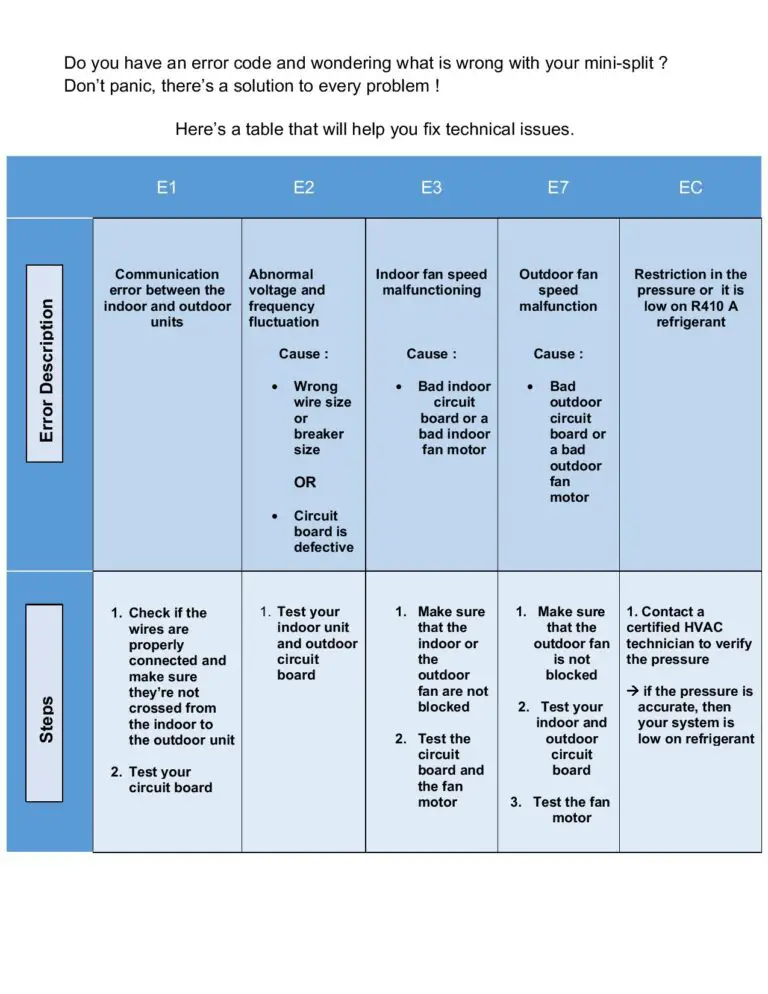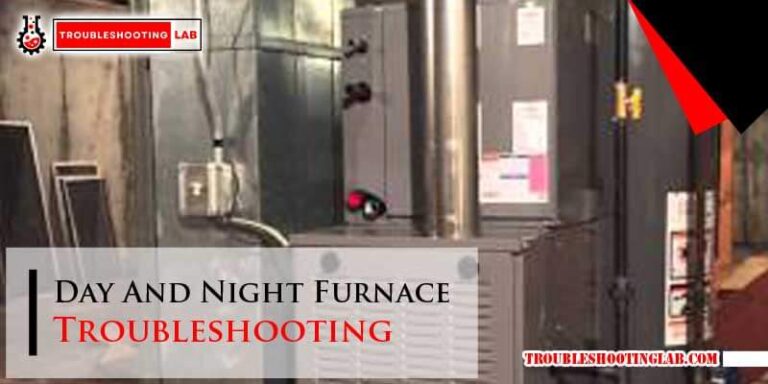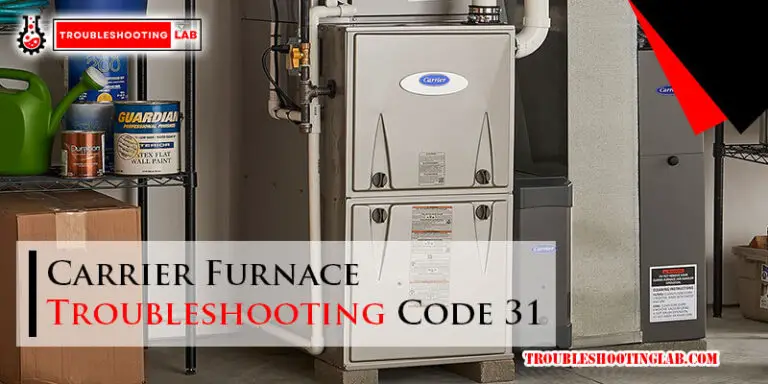Armstrong Air Furnace Troubleshooting: Expert Tips Revealed
Dealing with a furnace that isn’t working properly can be frustrating, especially when the temperatures drop. If you rely on an Armstrong Air furnace to keep your home warm and cozy, you know how important it is for it to function smoothly.
But what do you do when something goes wrong? Don’t worry—you’re not alone, and help is here. In this guide, we’ll walk you through simple and effective troubleshooting steps to get your Armstrong Air furnace back on track. Whether it’s uneven heating, strange noises, or a furnace that won’t turn on, we’ve got you covered.
By the time you finish reading, you’ll feel more confident about identifying and possibly fixing the issue yourself—or knowing when to call a pro. Ready to take control of your home’s comfort? Let’s dive in!
Common Issues With Armstrong Air Furnaces
Armstrong Air furnaces are known for their reliability, but like any appliance, they can experience problems over time. Understanding common issues can save you time, frustration, and even money. Let’s break down the most frequent problems and how you might tackle them.
Furnace Not Heating
One of the most frustrating issues is when your furnace isn’t producing heat. This could be caused by something as simple as a clogged air filter blocking airflow. Check your filter and replace it if it’s dirty—this alone can solve the problem in many cases.
If the filter isn’t the culprit, inspect your furnace’s circuit breaker. A tripped breaker can cut power to the system. Reset it if necessary, but if it trips again, you may be dealing with a larger electrical issue that requires professional help.
Blower Fan Problems
If your furnace is running but not blowing enough air, the blower fan could be acting up. Dust and debris buildup on the fan blades can reduce efficiency. Cleaning the fan is a simple maintenance task that often restores proper airflow.
In some cases, the blower motor itself might be failing. Listen for unusual noises like grinding or squealing, as these can indicate mechanical issues. Don’t ignore these sounds—they often get worse over time.
Pilot Light Or Ignition Issues
If your furnace won’t start, the problem might be with the pilot light or ignition system. Older models often rely on a standing pilot light, which can go out due to drafts or dirt. Relight it carefully following the manufacturer’s instructions.
Modern furnaces use electronic ignition systems, which can fail due to wiring issues or a faulty igniter. Before calling a technician, check for loose wires or reset the furnace to see if that resolves the issue.
Thermostat Malfunctions
A faulty thermostat can lead to inconsistent heating or a furnace that won’t turn on. Start by checking the thermostat’s batteries—they might just need replacing. Set the thermostat to a higher temperature to see if the furnace kicks in.
If that doesn’t work, ensure the thermostat is properly calibrated and connected to your furnace. In some cases, upgrading to a programmable or smart thermostat can solve recurring issues while improving your energy efficiency.
Have you faced any of these problems? What solutions worked for you? Share your experience in the comments and help others troubleshoot their Armstrong Air furnace issues!

Tools Needed For Troubleshooting
Proper troubleshooting of an Armstrong Air furnace requires the right tools. Using the correct tools ensures accuracy and safety during the process. It also helps identify issues quickly and efficiently. Below is a guide to essential tools needed for successful furnace troubleshooting.
Essential Hand Tools
Basic hand tools are a must for furnace troubleshooting. A screwdriver set is essential for removing panels and tightening loose components. Pliers help grip wires or small parts during repair tasks. A wrench set is useful for adjusting bolts and fittings. Keep a flashlight handy to illuminate dark areas inside the furnace.
A multimeter is another critical tool for checking electrical connections. It measures voltage, current, and resistance to identify faults. Wire strippers are helpful for repairing damaged cables or installing new wires.
Diagnostic Equipment
Diagnostic tools are key for pinpointing specific furnace issues. A combustion analyzer measures gas levels and ensures safe operation. This tool helps verify the furnace is burning fuel efficiently. A manometer checks air pressure levels in ducts or the furnace itself.
Infrared thermometers are ideal for measuring surface temperatures. They help detect overheating components or airflow issues. Use an electrical tester to confirm power supply and circuit functionality.
Safety Gear
Safety gear protects you during troubleshooting tasks. Wear insulated gloves to guard against electrical shocks. Safety goggles shield your eyes from debris or flying particles. A dust mask prevents inhalation of dirt and allergens in the furnace area.
Rubber-soled shoes reduce the risk of slipping or electrical grounding. Ensure your work area is well-lit to avoid unnecessary hazards. Always prioritize safety to ensure a smooth and safe troubleshooting experience.
Step-by-step Troubleshooting Guide
Armstrong Air furnaces are known for their reliability and efficiency. Yet, like all appliances, they can face issues over time. This step-by-step troubleshooting guide will help you address common problems. Follow these steps to keep your furnace running smoothly.
Inspecting Power Supply
Check if the furnace is receiving power. Look for a tripped circuit breaker or a blown fuse. Ensure the power switch near the furnace is turned on. Test the outlet with another device to confirm it’s working. If the furnace still doesn’t power up, there may be wiring issues.
Checking Filters And Airflow
Clogged filters restrict airflow and reduce efficiency. Remove the filter and inspect it for dirt or blockages. Replace it if it’s dirty. Ensure air vents and registers are open and unobstructed. Blocked airflow can cause the furnace to overheat and shut off.
Examining Burners And Flame Sensors
Dirty burners can disrupt the combustion process. Turn off the furnace and inspect the burners for dirt or rust. Clean them with a soft brush if needed. Check the flame sensor for buildup. A dirty sensor can prevent the furnace from staying on. Clean it gently with fine sandpaper.
Resetting The Furnace
Sometimes, a simple reset can fix minor issues. Locate the reset button on the furnace. Press and hold it for 10 seconds, then release. Wait a few minutes and try starting the furnace again. If it doesn’t restart, consult your user manual for specific instructions.

Maintenance Tips To Prevent Issues
Keeping your Armstrong Air furnace in good condition is crucial. Regular maintenance reduces breakdowns and extends its lifespan. Simple steps can help you avoid costly repairs and ensure smooth performance. Below are essential tips to prevent issues with your furnace.
Regular Filter Replacement
Dirty filters restrict airflow and strain your furnace. Replace filters every 1-3 months during heavy use. Use the correct size and type for your furnace model. Regular replacement improves efficiency and keeps your indoor air clean.
Cleaning Components
Dust and debris can build up inside your furnace. Clean the blower, motor, and vents periodically to prevent blockages. Use a vacuum or soft brush to remove dirt from accessible areas. Always turn off the power before cleaning any parts.
Scheduling Professional Inspections
Hire a professional technician to inspect your furnace yearly. Experts can spot hidden problems before they worsen. They check electrical connections, test safety controls, and ensure proper gas pressure. A professional inspection ensures safe and efficient operation.
When To Call A Professional
Armstrong Air furnaces are known for their reliability, but like any home appliance, they can occasionally run into trouble. While many issues can be resolved with basic troubleshooting, some situations demand professional expertise. Knowing when to call in a pro can save you time, money, and stress. Below, we’ll explore key signs that point to severe damage, ongoing performance problems, and how your warranty might affect your decision.
Signs Of Severe Damage
Severe damage in your furnace is more than just an inconvenience—it can pose safety risks to your home. If you notice strange smells like burning or gas, shut off the furnace and call a professional immediately. These odors could signal electrical issues or a gas leak.
Visible damage is another red flag. Cracks in the heat exchanger, rust, or damaged wiring are signs that your furnace may be beyond DIY repair. A technician can assess the extent of the damage and recommend safe solutions.
Unusual noises, such as banging, screeching, or rattling, often indicate mechanical failure. Don’t ignore these sounds; continuing to use the furnace could worsen the problem.
Persistent Performance Issues
If your furnace struggles to maintain consistent heating, it’s time to bring in a professional. Uneven heating across your home could stem from airflow issues or ductwork problems that require specialized tools to fix.
Rising energy bills are another warning sign. A furnace that’s working harder than usual to heat your home could have internal issues like a clogged burner or malfunctioning fan. An expert can identify the root cause and restore efficiency.
Frequent cycling—turning on and off too often—is often linked to thermostat or sensor problems. If adjusting the thermostat doesn’t help, a technician can diagnose and resolve the issue.
Understanding Warranty Coverage
Before calling for repairs, check your furnace’s warranty. Many Armstrong Air furnaces come with parts and labor coverage for a specific period. If your furnace is still under warranty, repairs might be covered entirely or at a reduced cost.
Be mindful of warranty conditions. Attempting DIY repairs or using non-certified technicians could void your coverage. Always follow the manufacturer’s guidelines to protect your warranty benefits.
Need help figuring out your warranty status? Reach out to Armstrong Air’s customer service or check the paperwork you received with your furnace. Knowing your warranty details can save you from unexpected expenses.

Conclusion
Fixing Armstrong Air furnace issues is simpler with the right steps. Regular maintenance helps avoid frequent problems. Clean filters and inspect parts to keep it running well. Always follow the user manual for safe troubleshooting. If problems persist, contact a professional for help.
Timely repairs can extend your furnace’s lifespan. A well-maintained furnace keeps your home warm and energy-efficient. Stay proactive to save time and money on future repairs. Keep your system in good shape for reliable performance all year long.





